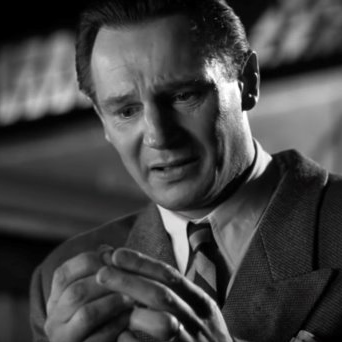
News

‘Schindler’s List’ at 25
MICHAEL BERENBAUM
In April, the US Holocaust Memorial Museum opened its doors. Now, 45 million visitors later, it is a fixture adjacent to the National Mall in Washington, DC. Not only does it tell the story of the Holocaust, it also demonstrates the ongoing significance of this Jewish event – this European event – to the American people, to Western civilisation and to the world.
In November of that year, Steven Spielberg, widely recognised as the most influential film director of this generation, released his monumental work, Schindler’s List, to international acclaim. Forsaking many of the tools of his profession, including the beautifying effect of colour, Spielberg created a masterpiece.
Nominated for 12 Academy Awards, the movie won seven, including for best picture, best director, best adapted screenplay and best original score. The overture to Schindler’s List, written by John Williams, is routinely played whenever Holocaust events are held. Its haunting tones evoke not only the motion picture but the event itself.
Expected to lose money, Schindler’s List was probably greenlighted by Universal Studios because Spielberg was a director’s director. He vowed not to make money on the film, saying his task was sacred, not entrepreneurial.
Yet despite its length of over three hours, it grossed $321 million (R4 trillion) in its initial release – more than 14 times its original cost. Spielberg donated his share to charity.
The story of Oscar Schindler was cherished by its survivors, but little known even by experts. For years, Leopold Page would tell his story to people who walked into his Beverly Hills luggage store, hoping that one of his prominent customers would bring it to the screen.
Australian writer Thomas Keneally walked in one day. The result was his 1982 historical novel, Schindler’s Ark. For decades, two New Jersey developers named a Schindler Drive or Schindler Road in each of their developments, honouring the man who saved their lives. Only later did residents understand who was being honoured.
Schindler, a Sudeten German, was an unlikely Holocaust hero. A philandering Nazi war profiteer, he used Jewish money, Jewish talent and Jewish slave labour to build his metalworks business and his fortune. His transformation was gradual. He saw too much evil and then used the same cunning, and daring, to save his endangered Jews. He moved them from Krakow to Czechoslovakia along with his factory, and they survived the war. More than 1 200 Jews were rescued due to his interventions.
Spielberg resisted the temptation to valorise Schindler.
Schindler’s List had a monumental unintended consequence. Survivors kept coming up to Spielberg and saying: “Have I got a story to tell you.” The filmmaker listened with ever-growing fascination. As a man who could move millions with his work and who was at the forefront of technological innovation, Spielberg vowed to record the testimonies of 50 000 survivors and preserve them for posterity. Naturally, he chose video.
The result was what was then called the Survivors of the Shoah Visual History Foundation, which took the testimony of 52 000 Holocaust survivors in 57 countries and 32 languages, compiling the largest collection of oral history of any historical event.
At first, Spielberg envisioned disseminating the entire collection to five major research centres. In the years since, the collection has not only been disseminated, but community after community has used the testimonies of local survivors to create films and educational material.
Related films have been made on death marches and Sonderkommandos, the prisoners who worked in the vicinity of the death camps, areas where documents are few and memories deep.
Now housed at the University of Southern California, the renamed Shoah Foundation Institute for Visual History and Education is pioneering a video dialogue with survivors using voice recognition software. It allows a genuine conversation with holographic images of survivors, drawing on their actual testimonies. It is taking testimony from other genocides, Cambodia and Rwanda and Bosnia, as sadly, the list grows. And institutions throughout the world are creating educational programmes from this work.
Spielberg himself has become a major moral voice of our generation, making films that grapple with racism, slavery and the courage to take a stand.
Spielberg grew more comfortable in his Jewish identity and his ability to embrace that identity without being narrowly parochial. His name is synonymous with excellence and poses a challenge to filmmakers to engage their own tradition. Like the US Holocaust Memorial Museum, Schindler’s List demonstrated that a Jewish story could remain deeply Jewish and yet speak to the mainstream.
In Krakow last week, I stood in line with hundreds of visitors at Schindler’s factory, where a museum has been created. It attracts visitors from all over, all of whom were drawn to the place because of the story Spielberg told as only he could: of a scoundrel who, over time, became noble. (JTA)
- Michael Berenbaum, professor of Jewish studies and director of the Sigi Ziering Institute: Exploring the Ethical and Religious Implications of the Holocaust, was president of the Survivors of the Shoah Visual History Foundation from 1997 to 2000.




